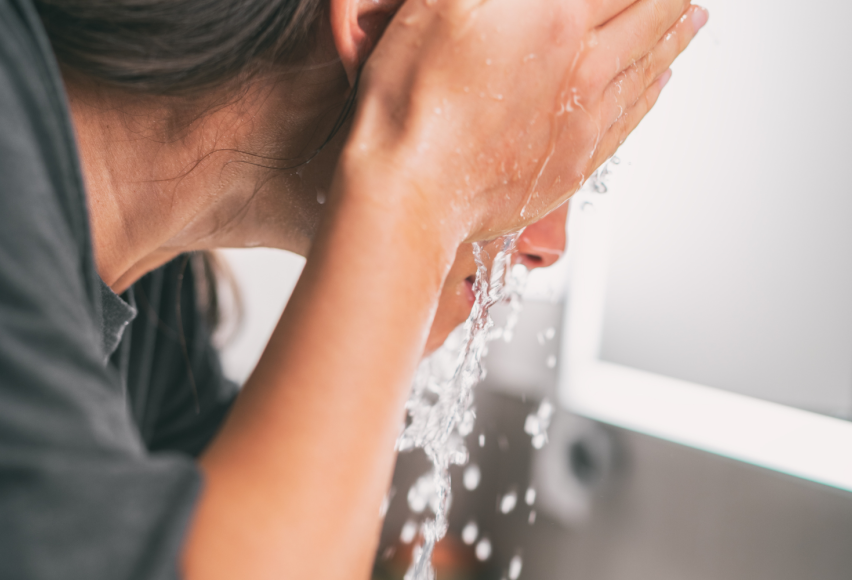Dispelling Misconceptions: Dermatillomania Is Not Just Bad Hygiene

Online test
Find out the severity of your symptoms with this free online test
Skin is more than just our body’s covering. It is one of the first things people notice, akin to our hair or our eyes. In many cultures, flawless, luminous skin is the epitome of beauty. The pervasive emphasis on skin's appearance is evident in popular media and the multi-billion dollar skin care industry, highlighting the pressure to achieve perfection.
So, when our skin doesn’t look its best, for whatever reason, it can create significant distress and even open the door to some insensitive judgment and questions. People often make assumptions about those who look different, and the pressure to meet those cultural aspirations of beauty can create tremendous pressure to hide any real or perceived flaws. We’ve all probably picked at a blemish just a little too long leaving noticeable damage to the skin and leaving us with some insecurity and maybe even some worry about the opinions of others. For people living with skin picking disorder, the pressure can be overwhelming.
One common misconception surrounding skin picking disorder, clinically known as dermatillomania or Excoriation Disorder, is the belief that it stems from poor hygiene practices. This oversimplification fails to recognize the complex psychological factors at play and undermines the challenges faced by individuals living with this condition. In this article, we aim to debunk this myth and shed light on the true nature of dermatillomania, emphasizing the importance of understanding it beyond surface-level assumptions.
Understanding Skin Picking
At first glance, one might think that skin picking is simply a skin problem of some kind. After all, the skin damage it causes is its most prominent feature. That damage can often look like dermatological conditions like severe acne or some forms of dermatitis. It is sometimes mistaken for another skin picking condition known as acne excoriee which is the excessive picking of one’s acne.
The difference is that skin picking disorder is not a dermatological condition but a psychiatric disorder. The skin picking is not the result of an existing skin condition. That can make it particularly difficult for people not living with the disorder to struggle to understand why one can’t just go and get their skin treated. After all, if you have a skin problem, you see a dermatologist. And sometimes, people with skin picking do see a dermatologist. The problem is, the underpinnings of the disorder lie in the realm of mental health.
Skin picking disorder, also known as Excoriation Disorder, is a body-focused repetitive behavior (BFRB) characterized by repetitive picking of the skin resulting in lesions and injury to the skin tissue, significant emotional distress, and impaired psychosocial functioning. It is classified as an Obsessive Compulsive Related Disorder (OCRD) in the Diagnostic and Statistical Manual of Mental Disorders (DSM5). Skin picking is different from OCD, but it does share similar qualities. One of those similarities is the presence of compulsions.
Compulsions are driven by intense psychological urges to complete a certain behavior in an effort to relieve feelings of anxiety or distress. They are not easily changed by simply gaining awareness or deciding to stop. (One of the reasons why “just stop” doesn’t work for most.) Dealing with compulsions usually requires psychological treatment intervention. Skin picking and other BFRBs like hair pulling behaviors are driven by these urges.
Skin picking is more than just the skin damage that occurs. Skin picking has significant psychological underpinnings. It is associated with high levels of distress, shame, and psychosocial avoidance. People with a BFRB like skin picking have high rates of co-occurring mental health disorders including depression or anxiety, post-traumatic stress disorder (PTSD) or ADHD.
Challenging the Stigma
Skin picking carries quite a bit of stigma and misunderstanding. People with skin picking may be seen as attention-seeking or neglectful of their skin care, self-harming or even contagious. The wounding of the skin can sometimes be quite severe.
It’s no secret that people living with skin picking disorder are self-conscious about their appearance. In fact, they will tell you that they can spend inordinate amounts of time trying to camouflage their skin damage. Social situations where people might notice their skin or worse, ask questions or make comments, can be particularly fear-provoking. They want to engage with their friends and family but the idea of having to “explain” or endure the looks, whispers, or questions can just be too much. Sometimes just avoiding the anticipated judgment is more appealing than facing it.
Qualitative studies have shown that people with skin picking disorder and other body focused repetitive behaviors (BFRBs) like hair pulling, worry about being judged for their appearance, that they may be seen as somehow lacking hygiene or even contagious. Some even see their own skin as “unclean” and needing to be cleansed or corrected.
The fear of being judged or misunderstood is one of the reasons often cited to avoid seeking treatment. There is worry that a therapist may judge or not understand skin picking. Not surprisingly, when people do find supportive care, they report feeling relieved and heard and hopeful.
Getting Help
One of the most persistent misconceptions about skin picking is that there’s nothing you can do about it. While it’s true that there is not a “cure” for skin picking, there are effective treatment options. With treatment, many people find that they are able to achieve remission.
Is there a medication for skin picking? It’s the first question most people ask about treatment. At present, there are no medications specifically used to treat skin picking. However, medication is sometimes used to treat the co-occurring mental health issues that sometimes accompany skin picking. Sometimes those medications can have a positive effect in symptom management. Topical anti-itch medications are sometimes used to help relieve the physical sensations that can trigger picking.
The best treatment outcomes have been found with psychotherapy, in particular, specific types of cognitive behavioral therapies. These are approaches that combine behavioral and cognitive elements that can help address the picking and its underlying psychological components. Probably the most well-known and widely accepted therapeutic approach is Habit Reversal Training (HRT). HRT is a behaviorally-based approach shown to be particularly effective in treating body-focused repetitive behaviors (BFRBs) like skin picking. HRT is sometimes combined with other treatment approaches such as Cognitive Behavioral Therapy (CBT) or Acceptance and Commitment Therapy (ACT). These combined approaches are thought to address both the behavioral and cognitive aspects of picking behavior.
Others have found help using alternative, self-help, and online resources. These can be particularly helpful for someone who is not open to or unable to access therapy. While self-help should not be considered a replacement for therapy, it can be a useful tool at various times.
Choosing to acknowledge and address skin picking is one of the most powerful ways to overcome the stigma associated with the disorder. Whether you decide to try it on your own or seek therapy, know that you can heal and you can learn to manage your skin picking. Seeking help is not an easy decision but it can be the one that makes the difference for you or someone you love.
References
1. Chapter 6. Obsessive-Compulsive and Related Disorders. (n.d.). Psychiatry Online. https://dsm.psychiatryonline.org/doi/10.1176/appi.books.9781585624836.jb06
2. American Psychological Association. (n.d.). Compulsion. APA Dictionary of Psychology. https://dictionary.apa.org/compulsion
3. Anderson S, Clarke V. Disgust, shame and the psychosocial impact of skin picking: Evidence from an online support forum. Journal of Health Psychology. 2019;24(13):1773-1784. doi:10.1177/1359105317700254
4. Grant, J. E., & Chamberlain, S. R. (2020). Prevalence of skin picking (excoriation) disorder. Journal of Psychiatric Research, 130, 57-60. https://www.sciencedirect.com/science/article/pii/S0022395620308773
5. Hartlin, A. (2022, October 6). 12 Dermatillomania myths dispelled. Skin Picking Support. https://www.skinpickingsupport.com/blog/12-dermatillomania-myths-dispelled/
6. Anderson, S., Clarke, V., & Thomas, Z. (2022). The problem with picking: Permittance, escape and shame in problematic skin picking. Psychology and Psychotherapy: Theory, Research and Practice, 96(1), 83-100. https://bpspsychub.onlinelibrary.wiley.com/doi/10.1111/papt.12427
Online test
Find out the severity of your symptoms with this free online test
Start your journey with SkinPick
Take control of your life and find freedom from skin picking through professional therapy and evidence-based behavioral techniques.
Start Now



